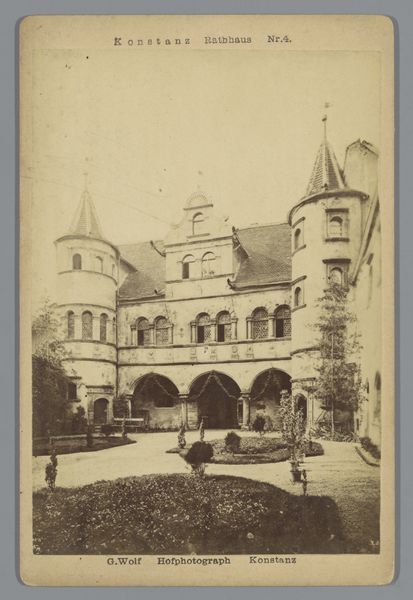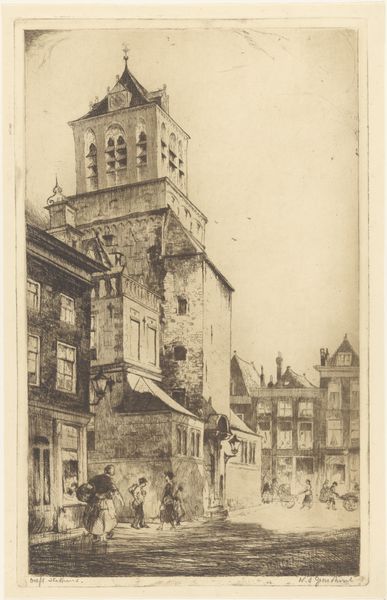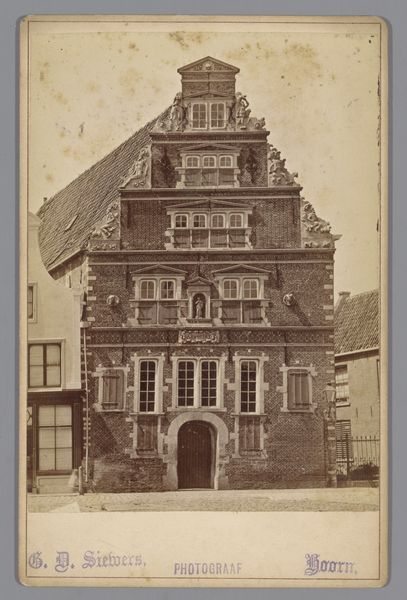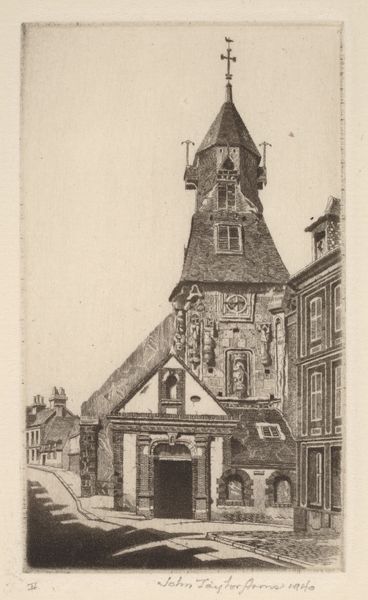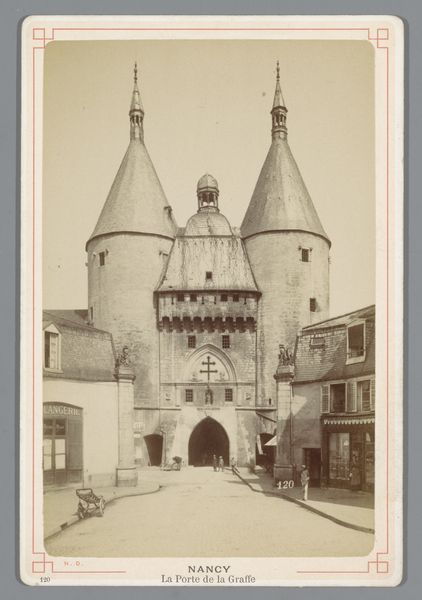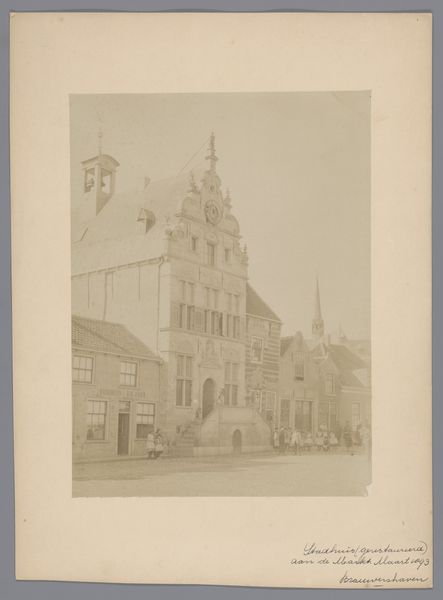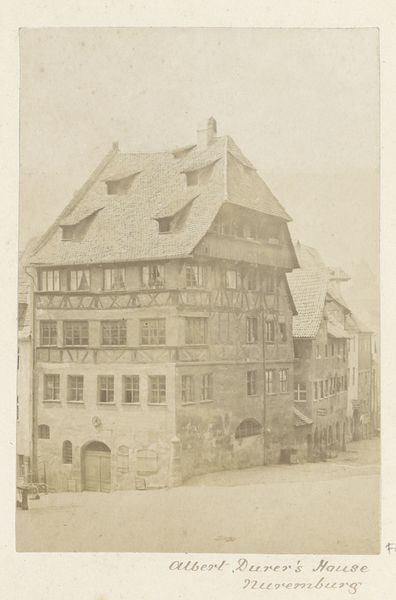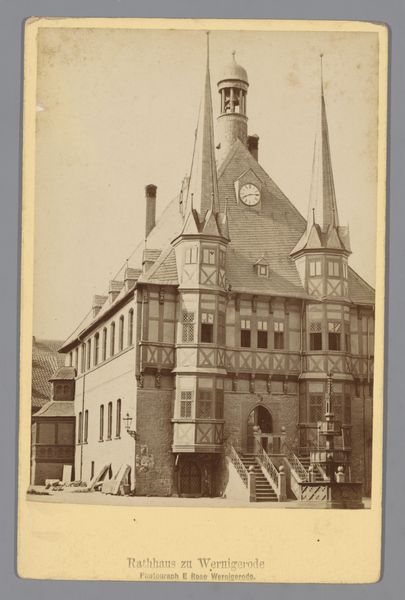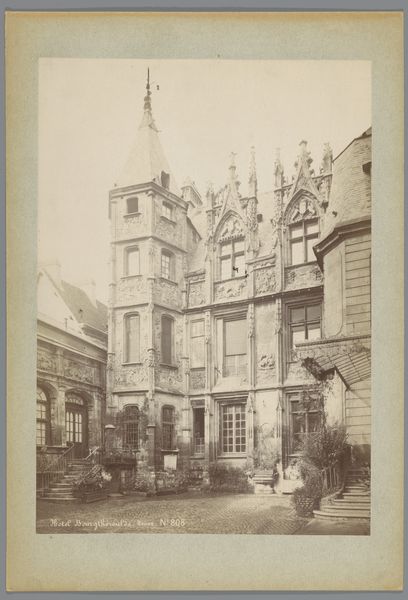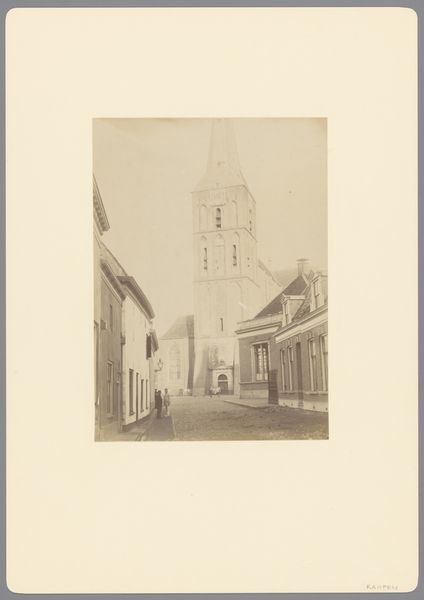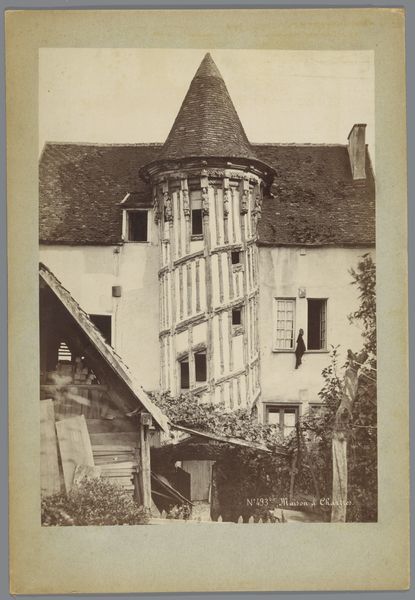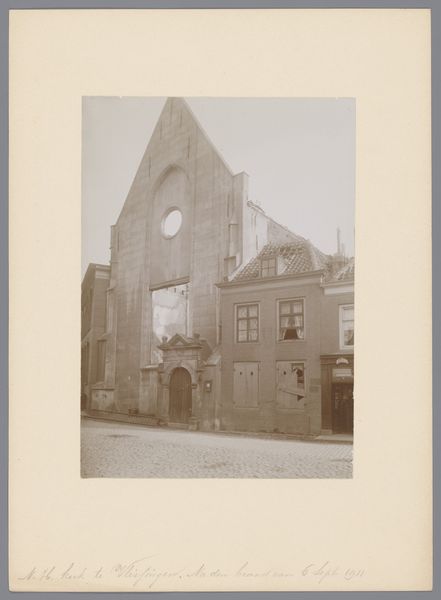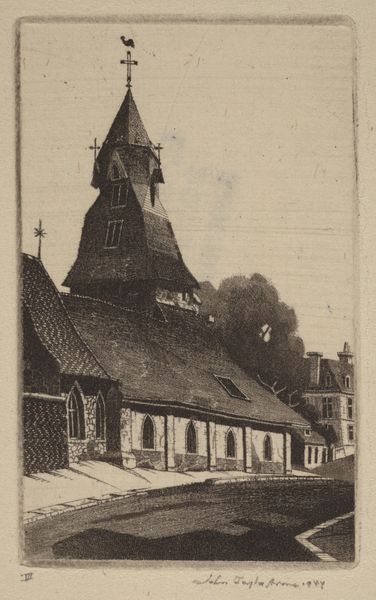
print, photography
# print
#
photography
#
19th century
#
cityscape
#
realism
Dimensions: height 142 mm, width 100 mm
Copyright: Rijks Museum: Open Domain
Curator: Before us we have Albert Wilhelm Ebeling's "Exterior of the Wernigerode Town Hall," a photograph dating to 1882. Editor: The first thing that strikes me is how imposing the building is. The muted tones create a somber mood, despite the crispness of the photographic image. I wonder what role this building plays in the narrative of this place. Curator: Certainly. We must remember the socio-political climate during its creation. Wernigerode, situated in what was then the Kingdom of Prussia, reflects burgeoning civic pride showcased through imposing architectural statements. These buildings physically embody that authority, which is further promoted in artworks. Editor: From a purely visual standpoint, the photograph has an impressive clarity of structure. The detailed facade of the town hall is sharply contrasted against the almost bleak expanse of the square, giving the architectural forms immense geometric integrity, almost as a declaration of its inherent stability in contrast with a rapidly shifting political landscape. The steeple, as a phallic symbol, becomes rather overdone by adding two more to either side. Curator: Semiotics, indeed, have much to contribute to a reading of these civic statements. Ebeling was active at a pivotal moment in Germany's history. These cityscapes became visual strategies affirming stability amidst urbanization and industrial change. The deliberate focus given in Ebeling’s approach reflects an interest in reinforcing a clear power structure via documentation and aesthetic elevation. Editor: It is fascinating how this building, likely designed for the betterment of the populace, still embodies elements of hierarchical social structure within its formal elements. Even in black and white photography from that era, light serves the purpose of creating symbolic depths of both perspective and historical narratives. Curator: Ebeling’s composition doesn’t merely record. He uses this image as a cultural artifact, embedding the town hall within a network of socio-political meaning that invites ongoing reassessment of how we perceive public spaces. Editor: I appreciate how digging into the intrinsic elements exposes layers within both its tangible architectural space and its socio-historic reality. It is important not to assume things at first glance but to delve deeper by analyzing visual clues that guide the eye to the true narrative.
Comments
No comments
Be the first to comment and join the conversation on the ultimate creative platform.
